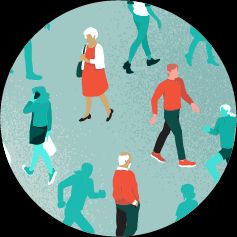When I was diagnosed with hepatitis C, I was 12 years old. My doctor explained that by the time I’d turn 30, I’d likely need a liver transplant or die.
It was 1999. There was no cure — only a yearlong treatment plan with a low likelihood of success and a lot of side effects.
There was hope a cure might happen in my lifetime, and in 2013, with the arrival of the first generation direct-acting antivirals (DAAs), my world changed. A cure had arrived.
I wish I had known that a cure was in my future. Trying to navigate high school was challenging enough for a teenager without feeling the very real pressure of my imminent demise.
There was no escape from the reality of the diagnosis, especially since my mom was diagnosed with hepatitis C around the same time.
Looking back, there are lots of things I wish I knew in the moment that would’ve helped me deal more effectively with my diagnosis.
My hepatitis C was caught early, but the cure wasn’t available until I had already entered end stage liver disease (ESLD). I wish I had known about how intense ESLD would be. I could’ve better kept in shape to help fight against the muscle wasting early.
I wish I had known that the hepatitis C virus (HCV) is systemic, and that it primarily causes the liver disease hepatitis C. I had no idea how wide-reaching HCV was — that the virus could interact with the brain, thyroid, and other organs, and could cause or mimic rheumatoid conditions, from arthritis and fibromyalgia to cryoglobulinemia.
I’m glad I learned at a young age how to use memory castles, anchors, and other memory tricks to help fight against my worsening hepatic encephalopathy as I entered my 20s.
I wish I had known to do more research earlier on. I’d only started doing lots of research into hepatitis C after my second treatment. Knowing about the potential side effects and their various remedies is a huge advantage when a doctor decides a care plan for you.
For example, through my own research I learned that a low salt/high protein diet is best for people with hepatic encephalopathy, ESLD, ascites, and muscle wasting.
Even knowing this, when recovering from a near sodium-deprived coma, the resident physician told me a high salt/low protein diet would be better for me.
This advice would lead to a 12-pound fluid drain from my stomach due to ascites, which would later show to be septic and nearly kill me.
I’m glad I had someone to guide me through treatment and that I eventually found a fantastic team of doctors. When I was diagnosed, I wish I’d known what qualities to look for in a good specialist.
After working with a number of specialists, I discovered that my personal preference was for a more recent medical graduate who understood hepatitis C well, and who was female.
Not “clicking” with specialists often resulted in misdiagnoses, incorrect or outdated advice, and even aggravating wounds by using needles of the wrong size.
I would’ve been better prepared for the resultant muscle wasting by doing more weight bearing exercise and eating more broccoli and salmon — good sources of natural calcium and vitamin D, respectively.
Suntanning a few times a week for about 20 minutes would’ve also helped optimize vitamin D absorption while simultaneously lowering my chance for melanoma — a risk that’s now increased due to my transplant meds.
I wish I had known that diuretics can manage ascites, but also that food can manage the electrolyte imbalance caused by the combination of ESLD and diuretics. This imbalance can also happen without diuretics, but they accelerate the process.
After years of exploring foods I could eat that would help me manage my symptoms, I came to a combination of honey-roasted peanuts, unsalted roasted cashews, unsalted roasted macadamia nuts, banana chips, and sometimes raisins or roasted salted almonds.
It had just the right combination of fats, sugars, potassium, magnesium, and sodium to allow my body to regulate itself more effectively.
I wish I had understood the Family Medical Leave Act earlier and used it when I needed to during one of my earlier treatments. It was essential to avoid being fired for excessive absences when I was on my third treatment while working at a tech support call center.
I’m glad I built a support network of friends who lived in the same apartment complex, so that when I became disabled and it became hard to manage things, I had friends able and available to help.
My friend group became very close. The strong emotional bonds helped ensure my ability to bounce back when treatment failed, or when my hepatic encephalopathy caused me to talk in circles.
I wish I knew there were others like myself; moreover, I wish I could’ve known them.
Thankfully, now there are lots of online groups and peer support lines, like Help-4-Hep, to talk to others with hepatitis C.
Thanks to resources like these, the things I wish I knew might just become common knowledge for others.
Rick Jay Nash is a patient and HCV advocate who writes for HepatitisC.net and HepMag. He contracted hepatitis C in utero and was diagnosed at age 12. Both he and his mother are now cured. Rick is also an active speaker and volunteer with CalHep, Lifesharing, and the American Liver Foundation. Follow him on Twitter, Instagram, and Facebook.











